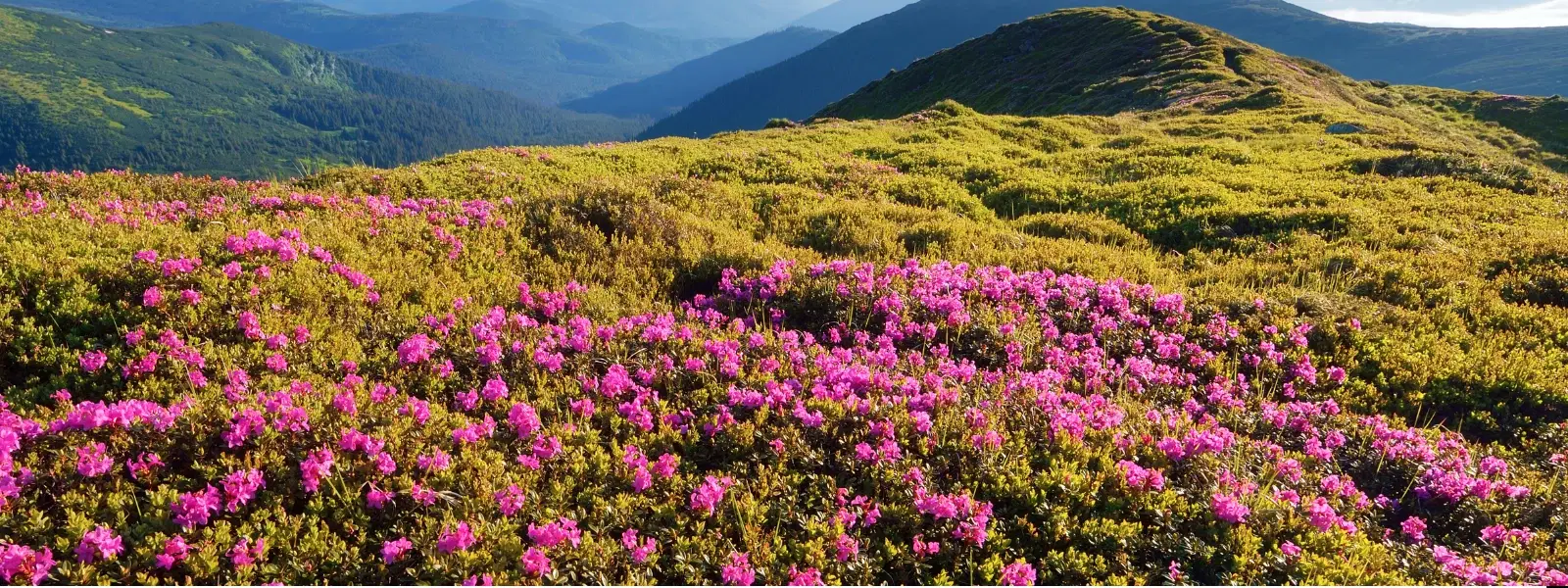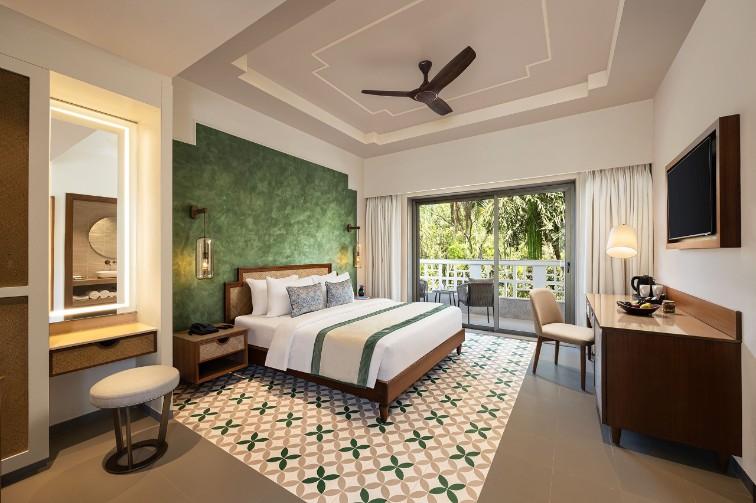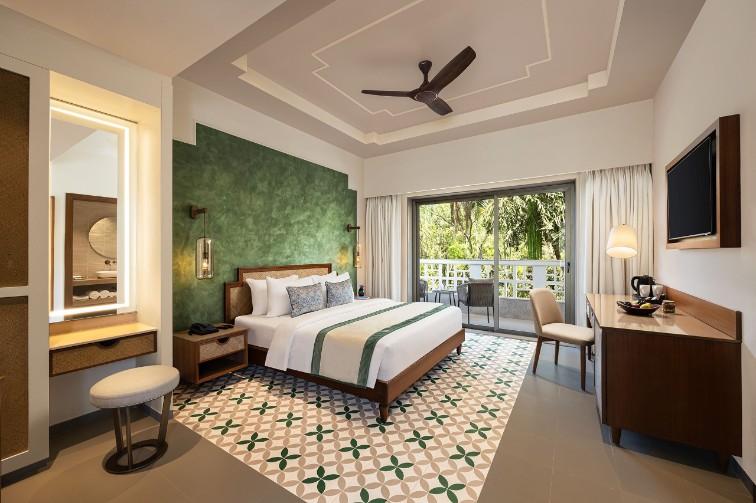
Hotels
•05 min read

The allure of the Valley of Flowers National Park is undeniable—a stunning mosaic of colors and scents that comes alive each year in the lap of the Himalayas. This UNESCO World Heritage Site is a haven for nature lovers and trekkers alike. Timing is everything when it comes to exploring this natural wonder. The park’s vibrant flora, pleasant weather, and ever-changing landscapes depend on when you plan your visit. In this blog post, we provide an in‐depth guide on the valley of flowers national park best time to visit by exploring the 10 best months to experience everything this enchanting destination has to offer.
Located in the Himalayan region of Uttarakhand, the Valley of Flowers is subject to dramatic weather patterns that shape every aspect of the visitor experience. Understanding the climate helps trekkers plan for the right conditions—whether it’s the excitement of snow melting to reveal budding meadows or the serenity of clear autumn skies. The climatic shifts impact not only the variety and timing of flower blooms but also determine the feasibility of trekking routes and overall safety.
The park experiences three distinct phases during the year. In the early summer month of June, melting snow reawakens nature and signals the start of the trekking season. July and August are marked by the peak of the monsoon, when the park bursts into a symphony of colors with vibrant, blooming flowers amidst lush greenery. As the park transitions into autumn in September through October, the flowers gradually fade, leaving a serene landscape under clear blue skies, ideal for peaceful trekking experiences.
As the park emerges from its long winter slumber, June offers a glimpse of the changing season. The meadows begin their transition from barren landscapes to areas touched by the first hints of green. Although the flower blooms are still in their early stages, the crisp weather and fewer crowds allow for a peaceful exploration. However, the limited floral display could be a downside for those seeking the full spectacle of colors.
The arrival of the monsoon in July transforms the Valley of Flowers into a natural paradise. As heavy rains nurture the soil, countless flowers begin to open, creating a breathtaking canvas of colors. While the monsoon conditions add a dramatic flair to the trekking experience, visitors should be cautious as rain-soaked trails can sometimes pose safety concerns. Proper gear and extra vigilance are key when trekking during this season.
August is undoubtedly the peak moment for the park. For flower enthusiasts and nature photographers, this month is simply perfect as every corner of the Valley bursts with life and vibrancy. The weather remains moist enough to sustain the blossoms, and the biodiversity reaches its full expression during this period. This month is often recommended as the ideal month for a Valley of Flowers trip due to the overwhelming display of natural beauty combined with favorable trekking conditions.

After the intense monsoon period, September ushers in a more tempered climate. Although the flowers begin to fade, the retreat of heavy rains yields clearer skies and a tranquil atmosphere. The clearer weather makes for a pleasant hiking experience and offers a different, yet equally captivating, view of the valley. This time is perfect for those who wish to enjoy a quieter, less crowded environment.
October marks the last window before winter sets in. The park may appear subdued compared to its monsoon brilliance, but the crisp autumn air and panoramic views over the valley add a compelling charm. It is a final opportunity for visitors to capture the unique beauty of the area before the park closes for the winter season.
Each season in the Valley of Flowers offers distinct advantages. Summer allows for early trekking with fewer visitors but offers lesser blooms. The monsoon season, notably in July and August, provides an indulgence in nature's vivid colors, making it the peak period for the majority of visitors seeking a vibrant floral display. Autumn, on the other hand, presents clear skies and a peaceful atmosphere, ideal for those who wish to trek without the crowds. The best season to visit depends largely on your personal preferences, be it the thrill of seeing nature at its most colorful or the calm of quieter trails.
When it comes to striking natural beauty combined with favorable weather, July and August take the spotlight. During these months, the park is in its full bloom, offering nature enthusiasts a landscape that is both diverse and breathtaking. This period is perfect for those intent on exploring a vivid tapestry of wildflowers, alongside enjoying a dynamic trekking experience that captures the essence of the Himalayan wilderness.
For travelers planning their visit, accommodation choices near the park are plentiful around areas like Govindghat and Ghangaria. Whether you prefer the comfort of hotels or the rustic charm of guesthouses and campsites, there is something to suit every taste and budget. Proximity to the park, essential amenities, and the ambiance of the lodging play a crucial role in enhancing your overall experience.
When searching for hotels near Valley of Flowers National Park, consider those that are well-reviewed and conveniently located for early morning treks. Lodging near Valley of Flowers Uttarakhand typically ranges from cozy, family-run guesthouses to more modern hotels equipped with comforts designed to rejuvenate tired trekkers after a long day on the trails.

To make your trip as smooth as possible, consider these travel tips: plan your transportation ahead of time, secure the necessary permits well before your departure, and pack efficiently with weather-appropriate clothing and trekking gear. Safety is paramount, especially during the monsoon season when paths can become slippery. By being well-prepared, you ensure that your journey through the Valley of Flowers is both enjoyable and memorable.
The Secret to a Perfect Valley of Flowers Trip
"The best time to visit Valley of Flowers is during July and August, when the park is in full bloom. However, booking accommodations in advance and preparing for unpredictable weather can make your trip stress-free and memorable."
July and August are the best months, as the park is in full bloom with vibrant flowers and lush greenery.
A typical trip requires 3-4 days, including travel time, trekking, and exploring the park.
Yes, it is a UNESCO World Heritage Site renowned for its stunning landscapes and diverse flora.
Yes, it is safe, but trekkers should be cautious of slippery paths due to monsoons and carry proper gear.
You can stay in Govindghat or Ghangaria, which offer various lodging options like guesthouses, hotels, and campsites.
In summary, while the best season to visit the Valley of Flowers depends on individual preferences, the months of July and August stand out as the peak time to experience the park's magnificent floral display. With its breathtaking natural beauty and diverse trekking experiences, the Valley of Flowers remains a must-visit destination for anyone who loves nature. Travelers are advised to consider both weather conditions and lodging options when planning their trip to ensure an unforgettable journey.